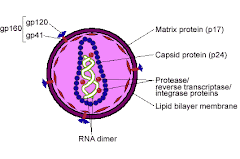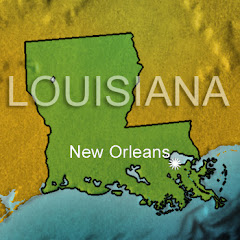The response to the California wildfires -- the country's biggest disaster since Katrina -- has earned praise from officials nationwide.
President Bush, on a visit to the charred region on Thursday, lauded the efforts of local responders and California Gov. Arnold Schwarzenegger, a fellow Republican.
"It makes a big difference when you have someone in the statehouse willing to take the lead," Bush said, in an apparent dig at Louisiana Gov. Kathleen Blanco, a Democrat.
Bush was way off base with that statement. There is a very distinct difference between the two disasters.
Perhaps the one universal connection, however, is emotion: Traumatized residents forced to leave their homes while wondering what, if anything, they might find upon their return. And, certainly, an out-of-control fire steadily devouring a large area is as frightening as rising floodwaters inundating a major city.
By Friday, the fires had burned about a half-million acres, an area twice the size of New York City. Much of the burned area was forest, but the Californians who lost homes -- at least 1,700 and counting -- are as devastated as the Katrina victims left homeless by the flood.
Katrina's scale of devastation and its impact on humanity, however, was far greater. The number of homes destroyed or still threatened in California is about 10 percent of the roughly 200,000 left uninhabitable by Katrina and the often overlooked Hurricane Rita, which struck three weeks later.
In New Orleans alone, 140 of 180 square miles flooded, -- rendering uninhabitable a residential zone seven times the size of Manhattan. Across the region, its winds and rains wreaked havoc to a 90,000-square-mile swath of the Gulf Coast, an area twice the size of the entire state of New York.
And while the federal government response has been swift in California, it was unorganized and late in Louisiana, problems that cannot be blamed on state government. Indeed, a commander with the Arkansas National Guard who helped secure Convention Center Boulevard told reporters he did not even receive an order to go to New Orleans until two days after the hurricane.
Financial losses from the fires based on initial estimates are about 2 percent of the damage caused by Katrina and Rita, which so far stands at $91 billion. While damage estimates are still climbing in California, initial estimates are about $2 billion.
Katrina forced the evacuation of 1.2 million people -- 500,000 remained displaced after four months. Almost 2,000 people died in Katrina.
The death toll from the fires stood at seven as of Saturday.
"These fires are not the same disaster that we had in Katrina," White House spokeswoman Dana Perino said this week. "There's so many differences."
Infrastructure still in place
Another major difference: The fires did not wipe out every remnant of infrastructure. Many California evacuees drove to shelters on roads unaffected by the disaster. Katrina and the subsequent flood obliterated power, water systems and nearly all traditional forms of communication -- cell phone towers, phone company switching centers and 911 call centers. The almost complete loss of communication for several days resulted in deadly consequences for many storm victims and first responders.
While the wildfires destroyed dozens of cell phone towers and land lines in California, causing service outages in isolated areas, companies have compensated with the use of mobile transmission equipment. Cell service and land-line use in San Diego, Anaheim and Los Angeles remain largely unaffected.
Once the levees failed in New Orleans, floodwaters swamped nearly every major road in and out of the city. Louis Armstrong International Airport shut down. Ground access into the city was largely limited to U.S. 90 from the West Bank and River Road on the east bank. Many supplies and support personnel had to be airlifted into the city by military aircraft, many of which did not arrive until well after the disaster.
The situation is more manageable in California. Most of the blazes are burning in sparsely populated areas. While the fires continue to pose some challenges to getting around in greater San Diego, the infrastructure of the city remained largely unfazed. Some highways have been closed, but the city's main interstate arteries and airport have remained open. The main San Diego airport is operating normally. Amtrak and regional commuter train service was restored on Thursday.
"There's a big difference - we have a functioning city," said Kevin McCoy, a crisis counselor from the Harbison Canyon Community Resource Center, who was among the hundreds of volunteers at Qualcomm Stadium this week. "When you walk out of this stadium you aren't stepping into 4 feet of water."
California evacuation
Both events forced massive evacuations. About 1.2 million people fled the New Orleans metro area ahead of Katrina, according to a Louisiana State University study.
Probably fewer than half that many southern California residents were displaced from their homes by the wildfires. According to a Los Angeles Times report Thursday, the number of evacuees at any one time in the region was significantly less than the 800,000 widely reported by officials earlier this week. Many residents began returning to their homes on Wednesday.
More reliable estimates of the number of people instructed to leave their homes put the number at between 350,000 and 500,000, which is still the largest evacuation in California history. A statement earlier in the week by the San Diego Sheriff's Office that more people had been evacuated in southern California than left in advance of Katrina has been dismissed as greatly exaggerated.
"It's unfair for a comparison to be drawn between the two," said Ken Higginbotham, spokesman for the Federal Emergency Management Agency operation at Qualcomm Stadium, San Diego's largest shelter for wildfire evacuees. "Both were catastrophic events that affected a large number of people. That's where the similarities end. This is a different time, a different period, a different scenario."
Katrina's lessons learned
What's more, officials and first responders in California have applied lessons learned from Katrina relief efforts. For example, Menshek said the San Miguel Fire Department rewrote and updated its strategic disaster plan in the wake of Katrina. He said the city also re-evaluated its evacuation shelters and designated new ones.
In addition, Katrina spurred an overhaul at FEMA. In stark contrast to Katrina, when only a handful of agency representatives were on the ground in the first hours after the storm, blue-shirted FEMA officials descended on relief shelters in droves almost immediately after the fires broke out last weekend.
At the Qualcomm Stadium shelter, more than two dozen workers buzzed around tents and offered aid to anyone in need for much of the week. There were so many FEMA representatives that many appeared to have little to do, passing time by watching TV or monitoring the Internet.
Sunday, October 28, 2007
California Wildfires cannot be compared to Hurricane Katrina
Blogs'FamilyCorruptionInTheBigEasy||
FamilyCorruptionInTheBigEasy: Part 2
Posted by
Boop
at
12:35 AM
![]()
Subscribe to:
Post Comments (Atom)














No comments:
Post a Comment